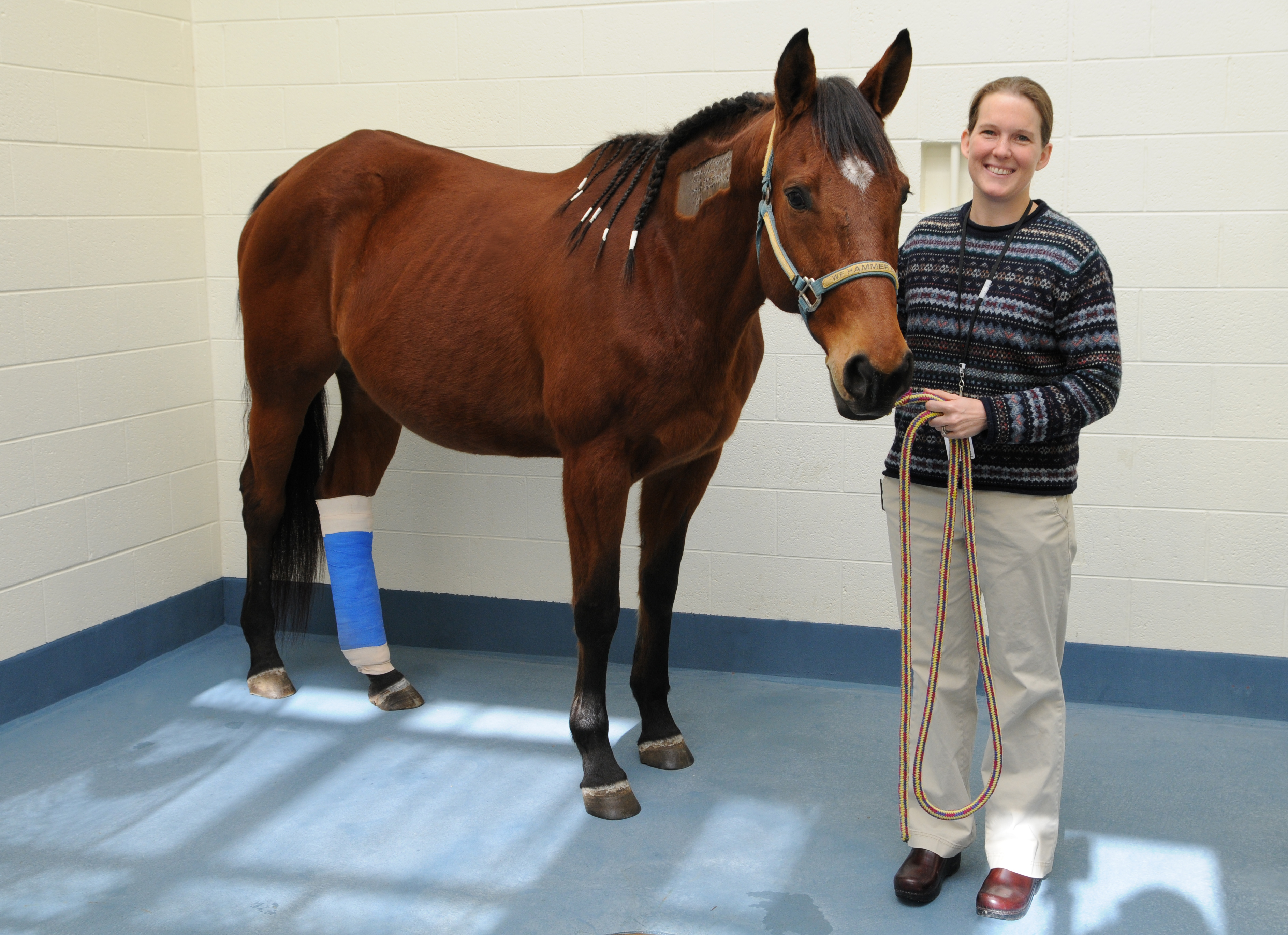Memory of Hannah George helps Gracie serve others

Hannah George was, by all accounts, a bright, happy, compassionate, 15-year-old girl. When she was killed with her father, prominent Roanoke cardiothoracic surgeon Dr. Jeffrey George, on Dec. 3 in a tragic car accident, there was heartache for many.
"She was just always glowing with the most radiant smile on her face. No matter what the situation was," said Sam Cox, headmaster of Faith Christian School in Roanoke where Hannah was in the ninth grade, in a Roanoke Times newspaper article. "And her greatest passion in life was horses."
It was Hannah’s passion that led friends of the Georges, Bob, and Susan Heath and their children, to make a donation for equine compassionate care to the Virginia-Maryland Regional College of Veterinary Medicine at Virginia Tech in Hannah’s memory.
“Hannah loved horses,” wrote Susan. “She was a beautiful person who is so missed.”
In the mountains of West Virginia, a horse she never met is continuing to help others thanks to Hannah’s kind spirit, the Heaths' generosity, and the talents of the surgeons in the veterinary college’s Department of Large Animal Clinical Sciences.
“Gracie” is a 12-year-old Appendix Quarter Horse mare from the equine assisted therapy program at New River Ranch in Fayette County. The ranch has provided residential group home care and health services to abused, neglected, and un-wanted children since 1988.
“Gracie, as well as other horses that belong to New River Ranch, provides a unique and valuable resource in the treatment of the children we serve,” said Carl White, executive director of the ranch. “Our children have the opportunity to learn from their relationship with our horses a wide variety of lessons -- such has how to give and receive love.”
Gracie was first brought to the Harry T. Peters Large Animal Hospital in late 2008 for help with wound care after she received a severe laceration on her left hind leg caused by high tensile wire.
She had received the wound several months prior to her trip to the hospital and, while she had received very good care at the ranch, several inches of hard, granulation tissue had formed on the leg, preventing it from healing properly, according to Dr. Linda Dahlgren, an assistant professor in the veterinary college, who first treated Gracie.
In addition, X-rays showed a specula bone proliferation — an outgrowth of bone on her leg at the wound site — that was also interfering with wound closure. While not life-threatening, large wounds like this can be uncomfortable and can affect a horse’s quality of life, explains Dahlgren. They can interfere with a horse’s ability to be ridden and are often repeatedly traumatized by the opposite leg or objects around the barn area and pasture.
The first step toward recovery was to remove the abnormalities and get the wound bed healthy. Dahlgren successfully completed this with the help of Dr. Erik Noschka, a resident in the college, and several students. This prepared the leg for a later skin graft.
After a week or so of recovery and observation, Gracie was sent home to heal over the holidays.
Gracie returned to the Veterinary Teaching Hospital early in the new year for evaluation. The wound was healing properly and was ready for the graft. Dr. Julie Settlage, a clinical assistant professor in the college, and Noschka performed the procedure in which small plugs of skin were taken from underneath Gracie’s mane and placed in recipient holes made within the wound.
Skin grafts are often necessary in wounds such as Gracie’s since horses have a limited amount of loose skin on their legs that can contract to cover the wound.
Bandage management during the first four to five days after a graft is highly critical, according to Settlage.
“During this time, grafts can adhere to the bandage instead of the wound and be inadvertently removed during change,” she said. “In fact, grafts do not become firmly adhered to the wound bed until around the 10th day.”
Because of this risk, it was recommended to keep Gracie in the hospital for extended observation.
“The Heaths’ donation allowed Gracie to stay in the hospital during these critical 10 days and we were able to supervise the bandage changes and graft success,” said Settlage. “At the time of discharge, it appeared as if we had a greater than 90 percent survival of the grafts — which is even higher than expected.”
Since she has returned home, Gracie’s wound has continued to heal with the help of the staff at the ranch, who have documented the process in pictures for the veterinarians who helped her. A full recovery is expected, according to Dahlgren.
“While we obviously cannot offer financial assistance in every case, we are very pleased the Heaths’ donation in memory of Hannah George allowed us the unique opportunity to offset a small percentage of Gracie’s care,” said Dr. David Hodgson, head of the Department of Large Animal Clinical Sciences. “We are especially pleased since Gracie’s good health will contribute to other children’s success.”




